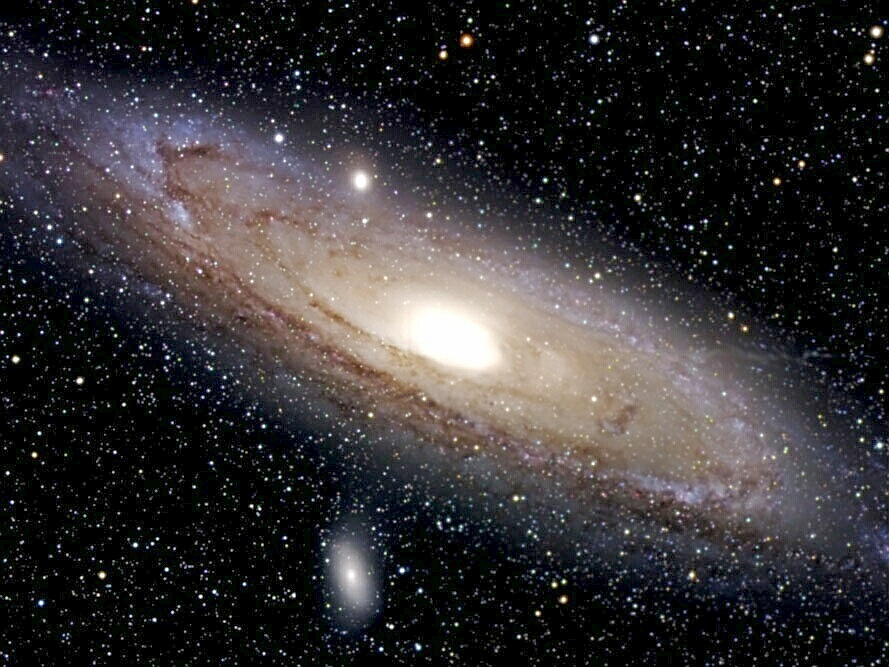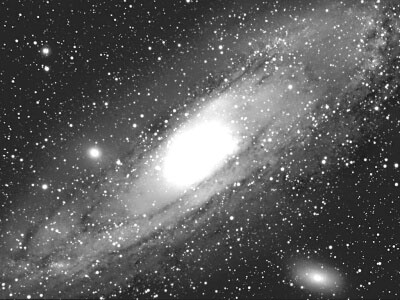| M31 - The Andromeda Galaxy and its two "daughter" mini-galaxies M32 & M110 |
|
| Main Astronomy Page Image Gallery Main Page Projects Page | |
|
Andromeda is HUGE in the night sky. It's the closest galaxy to the Milky Way, and edge-to-edge, it spans about twice the diameter of the full moon! It's bright central core is visible to the naked eye on a good night, and is easily seen with binoculars. The core is VERY bright when compared to the galactic disc, which makes imaging a challenging proposition. By the time you have enough exposure to bring out the edges, the center is completely "burned out" (see raw image below). This image was made by stitching together nine groups (stacks) of images. Eight cover most of the galactic disc in two bands, working from dim to bright, and a separate stack was used for the central area. Images aligned and stacked in CCDOps, pieced together and tweaked... tweaked... tweaked in Photoshop. I've probably spent more time piecing and tweaking on this image than any other. There's a tremendous range in brightness between the center of the galaxy and the outer edges. If you were in a space ship nearby, the galactic center would almost blind you, while the edges would be hardly visible (see the B/W images below - you'll get the idea). |
|
 It's widely believed that M32 and M110 are the left-over cores of two small galaxies that are in the process of merging with Andromeda. The two smaller galaxies may have lost many of their outer stars to the gravity field of Andromeda in the process. In time, these remnants may be fully absorbed into M31 as the overwhelming gravity of Andromeda steals away bits and pieces of them on every orbit. | |
 | One of the central core images. A typical view through the eyepiece of a moderate-size telescope might look a lot like this. We see only a hint of the galactic disc. M32 just looks like a big star, and M110 is a barely visible smudge. The details are there, but it takes a camera and time-exposure to bring them into view. |
 | Compare the edges of the galactic disc in this long-exposure frame with those above. The disc extends well past M32, but we can no longer see any detail in the galactic core. It's just too bright. A very-long exposure would reveal that the galactic disc actually extends past M110 as well, although it's not apparent in this frame. |